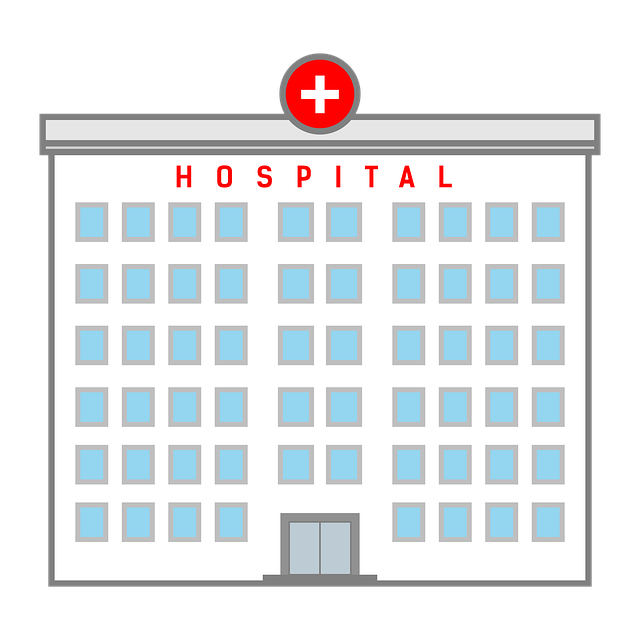Post-Traumatic Stress Disorder (PTSD) is a severe mental health condition characterized by flashbacks, nightmares, and anxiety stemming from traumatic experiences. Effective PTSD treatment involves tailored therapeutic approaches like Cognitive Processing Therapy (CPT), Eye Movement Desensitization and Reprocessing (EMDR), exposure therapy, and Cognitive Behavioral Therapy (CBT). These methods aim to process traumatic memories, challenge negative thoughts, reduce symptoms, and improve well-being. Alternative therapies including art, music, and animal-assisted therapy complement traditional treatments. Lifestyle changes, such as exercise and routine, along with support groups and community resources, are crucial components of PTSD treatment.
Post-Traumatic Stress Disorder (PTSD) is a mental health condition that can significantly impact an individual’s daily life and overall well-being. This article explores comprehensive strategies for managing PTSD symptoms, offering a multi-faceted approach to healing. From understanding the disorder and its effects on mental health to discovering traditional and alternative therapy options, such as CBT, EMDR, art therapy, and more, this guide provides valuable insights into effective PTSD treatment.
Understanding PTSD and Its Impact on Mental Health

Post-Traumatic Stress Disorder (PTSD) is a mental health condition that can affect individuals who have experienced or witnessed a traumatic event, such as war, violence, or natural disasters. It’s characterized by symptoms like flashbacks, nightmares, and severe anxiety, which can significantly impair daily functioning and overall well-being. The impact of PTSD on mental health is profound, often leading to feelings of detachment, irritability, and intense emotional responses.
Effective PTSD treatment involves a range of therapeutic approaches tailored to each individual’s needs. Cognitive Processing Therapy (CPT) and Eye Movement Desensitization and Reprocessing (EMDR) are recognized as evidence-based treatments, helping patients process traumatic memories and reduce the intensity of associated symptoms. By addressing the underlying causes and developing coping strategies, PTSD treatment enables individuals to regain control over their lives and improve their mental health trajectory.
Common Symptoms of Post-Traumatic Stress Disorder

Post-Traumatic Stress Disorder (PTSD) is a complex condition that can significantly impact an individual’s daily life and overall well-being. Recognizing the common symptoms is the first step towards effective PTSD treatment. One of the hallmark signs is intrusive recollection or flashbacks, where traumatic memories reoccur with vivid detail, often triggered by external cues similar to the original event. This can lead to intense emotional responses and physical reactions, making it challenging for individuals to feel safe in their surroundings.
Another prevalent symptom is avoidance, where people with PTSD deliberately steer clear of situations, people, or places that evoke distressing memories. They may also experience heightened arousal and hypervigilance, constantly feeling on edge and reacting strongly to minor noises or stimuli. These symptoms can interfere with social interactions, work performance, and overall quality of life, emphasizing the need for appropriate PTSD treatment interventions.
Traditional Therapy Approaches for PTSD Management

Traditional therapy approaches for PTSD management have evolved over time, offering various techniques tailored to address specific symptoms and triggers. Cognitive Processing Therapy (CPT) is a well-known method that focuses on identifying and challenging negative thoughts and beliefs associated with traumatic memories. Through structured sessions, individuals learn to reframe their interpretations of the event, reducing the intensity of emotional responses. Another evidence-based practice is Eye Movement Desensitization and Reprocessing (EMDR), which involves guiding patients through a series of bilateral stimuli while they recall traumatic memories. This process helps desensitize individuals to the distressing memories and associated beliefs.
These traditional therapies often include exposure therapy, where patients are gradually exposed to reminders of their trauma in a safe environment. This approach aims to help individuals face their fears and reduce avoidance behaviors. Additionally, group therapy provides a supportive setting where PTSD sufferers can share experiences, gain insights from peers, and learn coping strategies. Combining individual therapy with group support offers a comprehensive approach to PTSD treatment, addressing both personal growth and social integration.
Cognitive Behavioral Therapy (CBT): A Step-by-Step Guide

Cognitive Behavioral Therapy (CBT) is a widely recognized and effective approach for managing Post-Traumatic Stress Disorder (PTSD) symptoms. This step-by-step guide offers a structured framework to help individuals navigate their healing journey. The initial phase focuses on educating patients about the connection between thoughts, feelings, and behaviors, fostering self-awareness. Therapists assist clients in identifying negative thought patterns related to the traumatic event(s), challenging these distorted beliefs, and replacing them with more realistic and adaptive ones.
The therapy then progresses to training individuals in coping strategies to manage intense emotions and intrusive thoughts. This involves learning techniques like mindfulness, relaxation exercises, and problem-solving skills. As CBT encourages active participation, patients are guided to apply these skills in real-life scenarios, gradually exposing themselves to traumatic memories in a safe and controlled manner. This exposure therapy helps reduce avoidance behaviors and reinforces positive coping mechanisms, leading to improved PTSD treatment outcomes.
Eye Movement Desensitization and Reprocessing (EMDR) Technique

Eye Movement Desensitization and Reprocessing (EMDR) is a revolutionary therapy that has gained significant traction as an effective PTSD treatment. This technique aims to help individuals process traumatic memories and reduce the intensity of associated symptoms, such as flashbacks, nightmares, and avoidance behaviors. EMDR integrates eye movements or other bilateral stimuli with guided memory recall to help the mind reprocess disturbing events.
During a typical EMDR session, clients focus on a specific trauma-related memory while simultaneously engaging in side-to-side eye movements, usually through a therapist’s finger or a specialized device. This process allows the brain to unlock and reprocess the traumatic memories, reducing their emotional impact. As a result, individuals can gain new insights into the event, reframe their understanding of it, and ultimately experience a profound reduction in PTSD symptoms.
Alternative Therapies: Art, Music, and Animal-Assisted Therapy

For individuals seeking alternative approaches to manage their PTSD symptoms, art, music, and animal-assisted therapy offer promising paths to healing. Art therapy provides a creative outlet for expressing emotions and trauma, allowing individuals to visually represent their experiences in a safe, controlled manner. This can be particularly beneficial as it offers a non-verbal means of communication, which can be especially helpful for those who find it challenging to express themselves verbally.
Music therapy is another powerful tool that taps into the emotional resonance of music. Through listening or creating music, individuals can process and release traumatic memories and emotions. Animal-assisted therapy brings comfort and companionship, with studies showing significant improvements in PTSD symptoms among participants interacting with animals. These alternative therapies complement traditional treatments, providing a holistic approach to PTSD management.
Lifestyle Changes and Self-Care Strategies for PTSD Management

Lifestyle changes and self-care strategies play a pivotal role in managing Post-Traumatic Stress Disorder (PTSD). Individuals with PTSD can significantly improve their quality of life by adopting certain habits that support their mental health. Regular exercise, for instance, has been shown to reduce symptoms of anxiety and depression, commonly associated with PTSD. Even moderate physical activity, like walking or yoga, can help regulate mood and promote better sleep, which is crucial as insomnia often co-occurs with PTSD.
Additionally, establishing a consistent routine can provide structure and a sense of control. This includes setting regular meal times, ensuring adequate sleep, and incorporating relaxation techniques such as mindfulness meditation or deep breathing exercises. Avoiding substances like alcohol or drugs, which may temporarily alleviate stress but exacerbate symptoms in the long run, is also essential. Engaging in hobbies, spending time in nature, and cultivating social connections are further self-care strategies that can foster resilience and aid in PTSD treatment.
Support Groups and Community Resources for Healing

Support groups play a pivotal role in the journey towards healing for individuals dealing with PTSD. These groups provide a safe and non-judgmental space where people with shared experiences can connect, offer comfort, and exchange strategies to cope with their symptoms. Interacting with peers who understand the challenges of PTSD can foster a sense of belonging and reduce feelings of isolation. Many support groups are facilitated by professionals or experienced individuals who guide discussions and ensure members receive the necessary support.
Community resources, including local mental health centers and online forums, further enhance the accessibility of PTSD treatment. These platforms offer diverse therapeutic options, such as cognitive-behavioral therapy (CBT) and eye movement desensitization and reprocessing (EMDR), which have proven effective in managing PTSD symptoms. Online communities also facilitate peer-to-peer support through chat rooms and discussion boards, allowing individuals to access resources and share experiences from the comfort of their homes.
